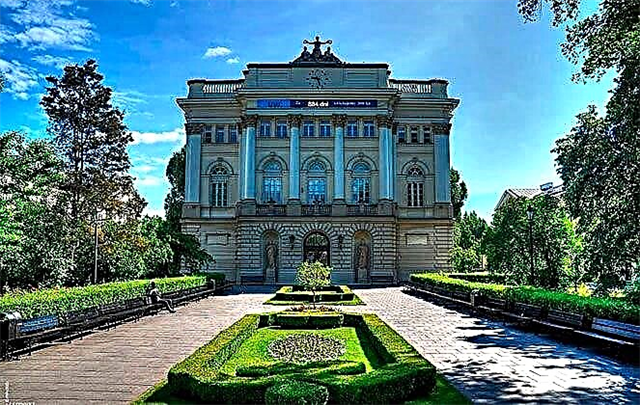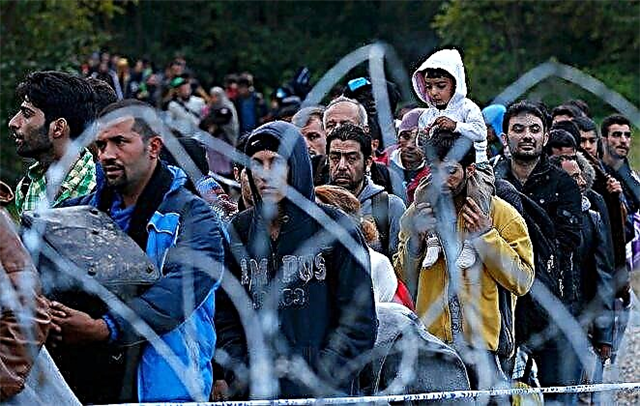In the modern world, the scale of migration is constantly growing: according to official statistics alone, the number of migrants is almost 3.5% of the world's population. If we add to this illegal immigrants, who are extremely difficult to count and take into account in statistical data, then the figure will turn out to be even more impressive. Scientists name various reasons for migration, but the main one is dissatisfaction with life, the inability to be realized at home, the search for a better future for themselves and loved ones.

Migration: what is it
To understand what migration is, you must first understand the meaning of the basic terms. Migration is the movement of people from one place of residence to another. At the same time, leaving the country is called emigration, and those who leave are called emigrants.
Arrival in the state is immigration, respectively, the participants in the process are immigrants.
From the point of view of specialists, migration within the country and travel abroad help to more systematically allocate labor resources, strengthen ties and relations between human communities, and overcome the negative consequences of the demographic decline in certain regions and countries.
At the same time, it is migration that is called the reason for the growth of tension in the political life of Western Europe and the United States.
Types of migration: who goes where
Migration types are distinguished according to various criteria.
By direction: domestically or internationally.
- Within one country, these are movements from one region to another, from the village to the city, from the south to the northern regions, where they pay more, to the south, because it is warm and comfortable to live there. As a rule, the reasons for internal migration are the search for higher wages and a comfortable place to live within the familiar community, unwillingness to change the living environment, draw up a lot of documents, learn another language and move to another country.
- Moving from country to country, from one continent to another. The economic reasons for migration are often the main ones. People go to a foreign country because they cannot find work in their homeland, they strive to improve their standard of living.
By duration: temporary and permanent. The main reasons for migration at the present stage are still economic, so people go where they can earn money. The time frame of movement influences in different ways the outlook for the development of the situation.
- Temporary migration. For the season, a person goes to work, while at home the migrant workers are left with a family, a house, their usual way of life, which often attract them and return them back.
- Permanent migration. If the whole family leaves for a new place in another country, then for the native state it is already lost forever.
By nature: voluntary and compulsory, when entire villages, cities and even peoples are relocated to a new place of residence during wars and ethnic clashes.
Reasons for migration
Briefly, the following main reasons for population migration can be named:
- Economic, when a person leaves his native place, because he cannot provide himself and his loved ones with a normal existence. The reasons for labor migration, for example, are currently largely associated with the "brain drain" from the CIS to the United States, Western Europe, as well as with the search for regular work in wealthier countries, where they offer high wages and comfortable working conditions.
- Social, when migrants choose a new place of residence to meet not only their primary needs for food and housing, but also in search of more pleasant and comfortable living conditions. The social reasons for migration are also marriage, the desire to realize oneself, to give children the opportunity to study in prestigious educational institutions.
- The reasons for population migration in the modern world can be cultural, when people return to their historical homeland: as an example, we can consider the mass migration of citizens of Jewish origin to Israel in the 50-70s. XX century.
- Political motives - in case of disagreement with the policy of the existing system and power in the country. Political reasons for migration, as a rule, are observed in countries with a totalitarian, tyrannical regime.
- Military reasons, the conduct of hostilities are also serious factors that force millions to leave their homes, moving to safer regions. A striking example is the situation in Syria, when huge masses of people began to leave the fighting areas en masse and leave for other countries. At the same time, many apply for refugee status.
What is illegal migration
Not all migrants formally prepare documents, apply to the relevant authorities, ask for permission from the government of the country they like in order to move there in accordance with the law.

Illegal migration is becoming more common. The number of refugees from Africa and the Middle East to Western Europe, the number of Mexicans, Puerto Ricans, and other residents of South and Central America storming the US borders cannot be accurately counted. They are not afraid of the consequences of illegal border crossing, the situation of people without rights and opportunities.
It's not hard to figure out why people migrate. The main thing for them is to get to the state, which seems to them to be a paradise on earth.
More and more cases of illegal emigration are noted in the east of Europe, where residents of Ukraine who have received a visa-free regime leave for European countries and remain in them to work illegally.
What migration statistics look like by country
In 2021, 258 million migrants are officially registered in the world. Of these, 180 million are from Asia, Africa, Latin America and the Caribbean.
Almost a third of migrants were born in 10 countries. India, China, Mexico, the Russian Federation, Bangladesh, Syria, Palestine, Ukraine, Great Britain, and the Philippines are among the top ten countries from which the largest number of emigrants leave. The top twenty includes Kazakhstan, Germany, Italy.
At the same time, the countries in which the largest number of emigrants live are the United States, where almost 50 million migrants live, as well as the Russian Federation, Germany, Saudi Arabia, the United Arab Emirates, Great Britain, France, Canada, Australia.
On the consequences of migration
One of the most tangible consequences of migration is financial flows to poor countries. Nearly $ 600 billion were transferred by migrants to their families and loved ones in 2021, with two-thirds of the transfers going to developing countries, providing significant support for their populations.
According to statistics, the cash flows that go from migrants to their homeland are several times higher than the targeted assistance of the World Bank to these states.
At the same time, migrants invest the bulk of their income in the economies of those countries where they moved. In the case of legal migration, deductions go in the form of taxes, payments for housing, food, utilities and other services.
Conclusion
The reasons for external migration, as well as internal movements of residents of different countries, are quite diverse: economic, political, cultural, social, military. The leading place in the world belongs to economic migration, the purpose of which is to ensure a decent life for themselves and their loved ones.
The result of labor migration is a significant contribution of those who left to work in the economy of both their own country and the country that has become their second homeland.











